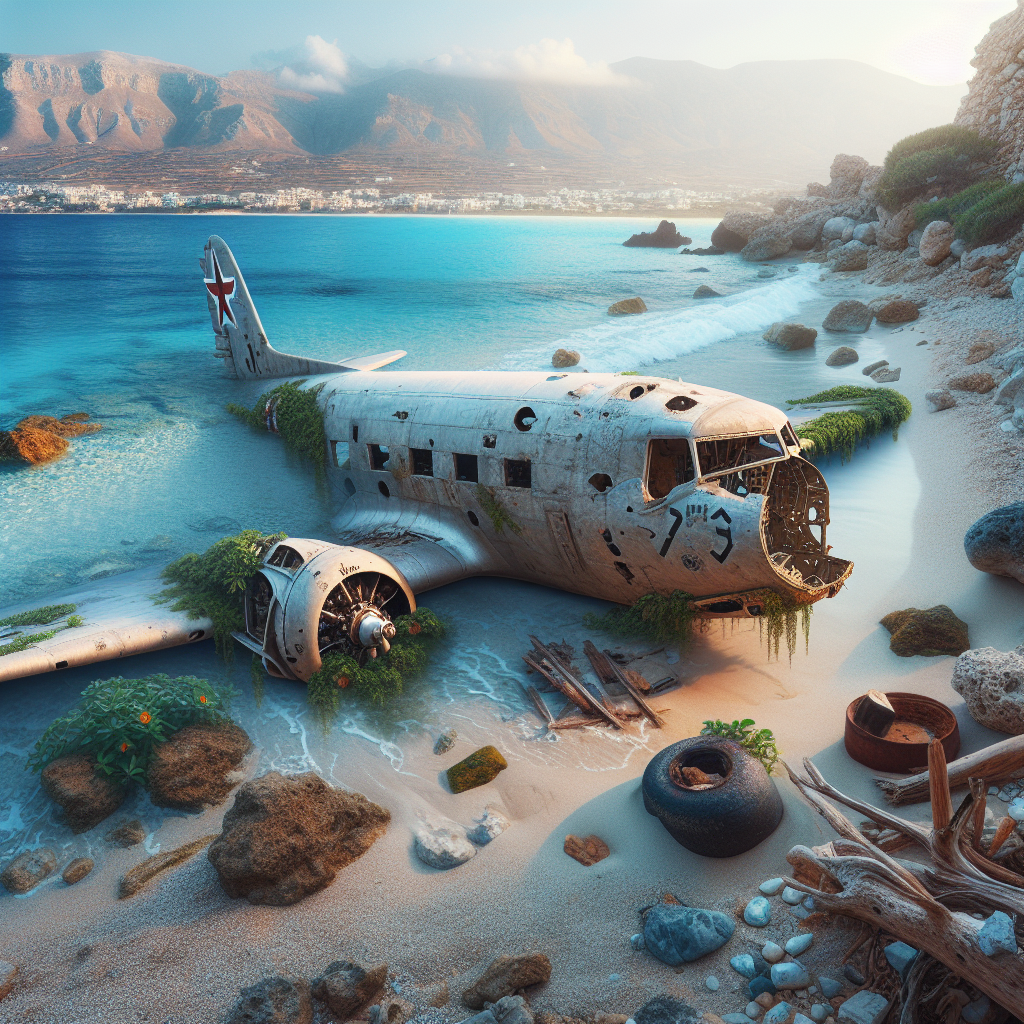Unearthing WWII: Newly Discovered Junkers Ju-88 Airplane Wreck in Rethymno, Crete
- Matt Shahid
- Sep 11, 2024
- 4 min read
Updated: Apr 7
Ahoy, fellow ocean enthusiasts! Today, we embark on a thrilling journey back in time as we dive into the mesmerizing depths of the Mediterranean Sea to explore the captivating discovery of an intact World War II-era German Junkers Ju-88 airplane wreck in the enchanting waters of Rethymno, Crete! This bomber plane was only just discovered in April 2024. This latest find is a thrilling development for historians, divers, and aviation archaeology enthusiasts, as it sheds light on the island's significant role during the Battle of Crete in 1941. For divers, the wreck also offers an exciting opportunity to explore history firsthand, as the underwater site becomes a unique dive destination.
It is in relatively good condition, with parts of the fuselage, wings, and cockpit still intact despite decades (around 82 years to date) underwater. The plane’s location off the coast of Rethymno is particularly interesting as this area was heavily involved in the fighting during the Battle of Crete.

A Call to Adventure
For those with a thirst for exploration and a passion for uncovering the secrets of the past, the airplane wreck in Rethymno beckons as a beacon of history waiting to be discovered. Whether you're an experienced diver seeking a new challenge or an avid history buff intrigued by the mysteries of WWII, this underwater marvel promises an unforgettable journey filled with intrigue and wonder.

So, gear up, dive in, and embark on an expedition unlike any other as we delve deep into the heart of WWII history, where the echoes of the past reverberate through the sunken remains of the Junkers Ju-88 airplane in Rethymno, Crete.
In the depths of the Mediterranean Sea lies a treasure trove of history, waiting to be explored.
The Dive Site
The Junkers Ju-88 airplane is situated just 2 miles from the shore. Making this dive site only accesible by boat. It lies in the sand, in around 20m of water. The dive consists of dropping directly down on the airplane, with nothing else around of much interest. It's no wonder it's taken so long to discover.
The wreck's remains, including parts of the fuselage, wings, and engines, are well-preserved. The cockpit, while partially damaged, is still visible, allowing divers to explore the plane’s structure and even get a glimpse of the instruments that once guided the aircraft through Mediterranean skies. You can see a machine gun in the cockpit which is in extraordinary condition and also blue nudibranchs are situated in and around the wreck.
Given the historical significance of the site, divers are encouraged to practice responsible diving, avoiding direct contact with the wreck to help preserve this important artifact. Anchoring near the wreck is also controlled to prevent damage, ensuring that future generations can continue to explore and study this unique piece of World War II history
The Junkers Ju-88: An Icon of WWII Aviation
The Junkers Ju-88 was one of the most widely used aircraft in the German Luftwaffe during World War II. Known for its adaptability, the Ju-88 was employed in a variety of missions, including bombing, reconnaissance, and even as a night fighter. Introduced in 1939, the plane quickly became one of the mainstays of the German air force. Its speed, range, and payload capacity made it a key tool in many campaigns, including the Mediterranean battles where Crete became a significant battleground.
During the Battle of Crete in May 1941, the Luftwaffe played a crucial role in supporting German paratroopers and ground forces. The Battle of Crete was a pivotal conflict in the Mediterranean theater, where German forces launched a large airborne invasion to take control of the island from British and Greek defenders. The Ju-88 was instrumental in these operations, conducting bombing raids and reconnaissance missions to weaken Allied positions. The newly discovered wreck off the coast of Rethymno likely participated in these very operations before meeting its fate.
It is believed that this plane in particular went down over a year after the Battle of Crete. It had mechanical failure and contained a crew of three. Two of which were killed or drowned. The 3rd of the crew managed to open a parachute and was saved by a local of the island.

Exploring Crete’s Rich WWII Heritage
Crete has become a significant destination for those interested in WWII history, with numerous wrecks from the war found both on land and underwater. The Junkers Ju-88 wreck adds to this legacy, joining other aircraft and naval wrecks in the waters around the island. This makes Crete a fascinating place for history lovers and diving enthusiasts alike.
The Ju-88 wreck serves as a powerful reminder of the island’s turbulent past and its importance during World War II. Each new discovery helps us better understand the scale of the conflict and the sacrifices made by both sides.

Conclusion
The discovery of the Junkers Ju-88 wreck off the coast of Rethymno is another reminder of Crete’s critical role in World War II. This find not only adds to our understanding of the Battle of Crete but also enriches the island’s legacy as a treasure trove of WWII history. For historians, archaeologists, and divers alike, this wreck offers an exciting opportunity to explore the past and uncover the stories hidden beneath the waves.
As more details about the wreck emerge, we can look forward to further revelations about its role in the war and the men who flew it. For now, this discovery stands as a testament to the enduring legacy of World War II and Crete’s pivotal place in it.

Comments